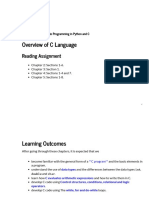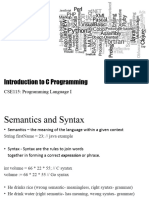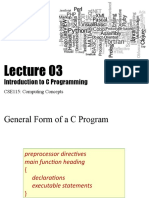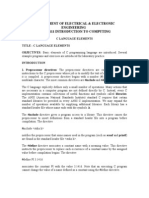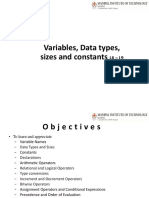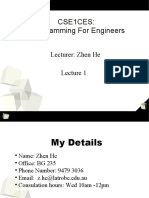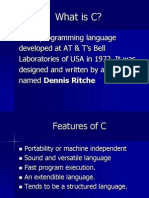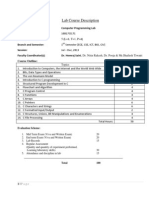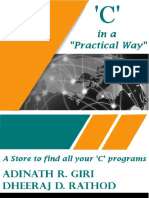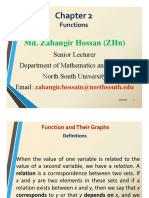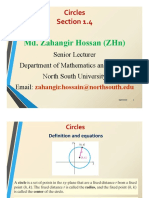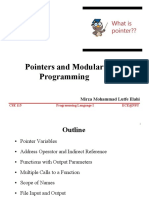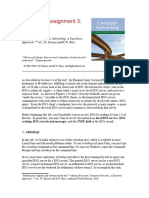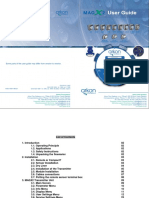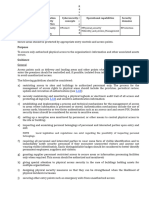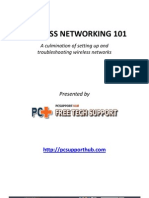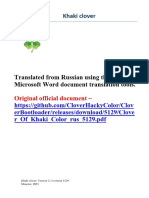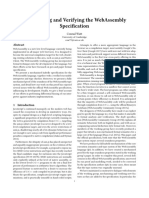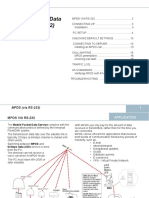0% found this document useful (0 votes)
112 views47 pagesC Slide
The document provides an overview of the C programming language, including its history, common elements, data types, and general program structure. It discusses how C was developed in the 1970s for writing operating systems like Unix and became widely used. The document outlines key C concepts like data types, variables, functions, input/output, and arithmetic expressions, and provides examples of basic C programs and code snippets.
Uploaded by
Rahib ridoyCopyright
© © All Rights Reserved
We take content rights seriously. If you suspect this is your content, claim it here.
Available Formats
Download as PDF, TXT or read online on Scribd
0% found this document useful (0 votes)
112 views47 pagesC Slide
The document provides an overview of the C programming language, including its history, common elements, data types, and general program structure. It discusses how C was developed in the 1970s for writing operating systems like Unix and became widely used. The document outlines key C concepts like data types, variables, functions, input/output, and arithmetic expressions, and provides examples of basic C programs and code snippets.
Uploaded by
Rahib ridoyCopyright
© © All Rights Reserved
We take content rights seriously. If you suspect this is your content, claim it here.
Available Formats
Download as PDF, TXT or read online on Scribd
/ 47






